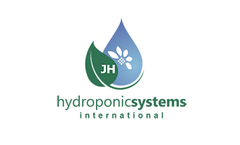Crop Testing Articles & Analysis: Older
12 articles found
Identify and correct crop nutrient deficiencies in your soil to increase yield and profit Achieving prosperity in Canadian agriculture is a balancing act. While new technologies increasingly grow your potential to overcome limiting factors and boost yields, oftentimes revisiting the basics will further support your efforts to reach an optimum balance in soil nutrients. A great place to start is ...
Over time, Hydroponic Systems has worked hard to transfer the advantages of our soil level Spacers to other gutter systems for drainage collection in hydroponic crops. This has included testing the use of Spacers on the top of metal gutters. ...
Since their appearance, the Spacers have marked a turning point in the efficiency of hydroponic cultivation drainage systems. There are significant advantages to their use and, at the end of the cycle, they have a positive impact on crop quality and yield. The main advantages of Spacers include good root aeration, separation of roots from drainage water (drain spacer) and improved leachate ...
In the summer of 2013, a field trial was conducted using soybeans as the indicator crop to test the effectiveness of Hibrix soil amendment for increasing plant growth and productivity under field conditions. ...
The deliberate planting of fast-growing N2–fixing legume monoculture species in rotation with cereal crops can be an important source of N for soil fertility replenishment. We hypothesized that mixed-species fallows have a higher potential of giving long-term residual benefits in terms of biomass, nutrients, and quality of residuals leading to long-term nutrient supply to ...
Increased biomass productivity could be achieved through double-cropping if extended growth duration could be realized with minimal reductions in growth efficiency relative to sole-cropping. To test this hypothesis, functional growth analysis was used to assess the relative importance of photosynthetic duration and efficiency in determining ...
We undertook an empirical study of 65 individual data sets from the Iowa Crop Performance Test for corn (Zea mays L.) to compare eight different mixed linear models to determine which features in the data need to be considered in developing approaches to make use of all available information. ...
High levels of grain protein content, test weight, and seed size and endosperm color may also add value. Seed yield potential, in part, determines the economic feasibility of producing human food varieties. To determine the potential of food barley production in the dryland production areas of the Pacific Northwest of the United States, 33 cultivars and advanced lines reported to ...
In breeding for self-pollinated crop cultivars, early generation testing and selection (EGT) is desirable because it allows for more resources to test superior lines and helps avoid the loss of desirable alleles that would occur if EGT is delayed. ...
Crop models are potential tools for designing water-efficient strategies and should be tested for accurate prediction of water deficit effects on production. ...
The toxicity of MSG wastewater to the test crops was in the order of tomato > Chinese cabbage > wheat, indicating that tomato was the most sensitive to the wastewater, and could be considered as an ideal toxic bioindicator. The half-effect concentrations (IC50) based on the seed germination and root elongation of the test ...
Although CIALs have been used mainly for testing new crops and varieties, an unorthodox project in Peru and Bolivia recently used CIALs with a range of research techniques: formal trials, participatory research and farmers' own experiments. ...






